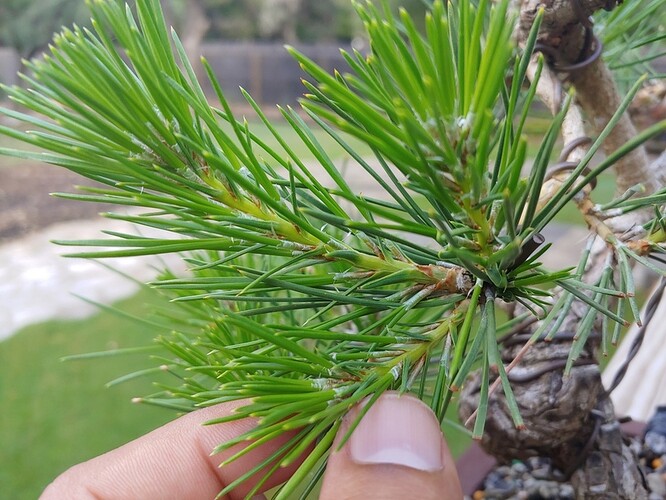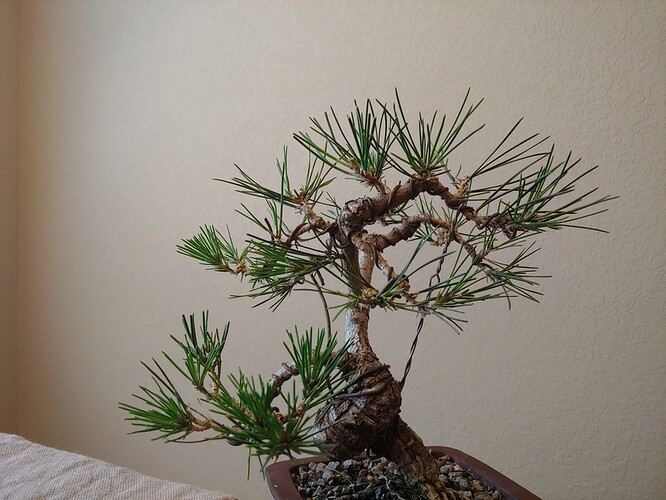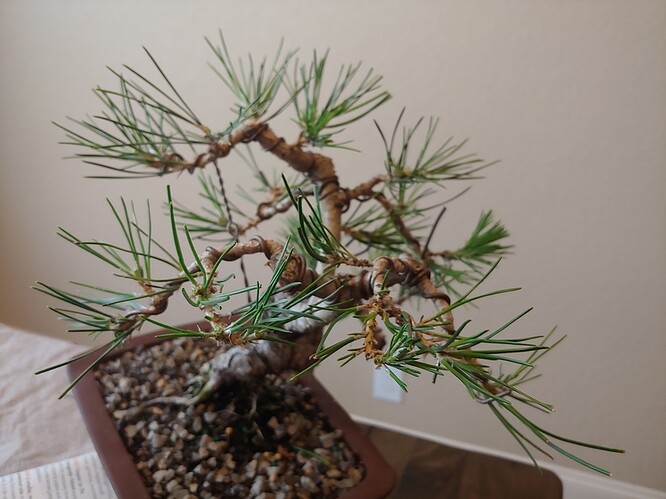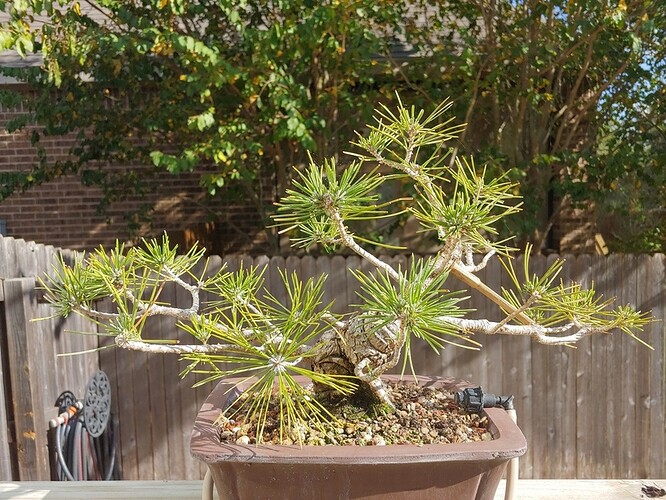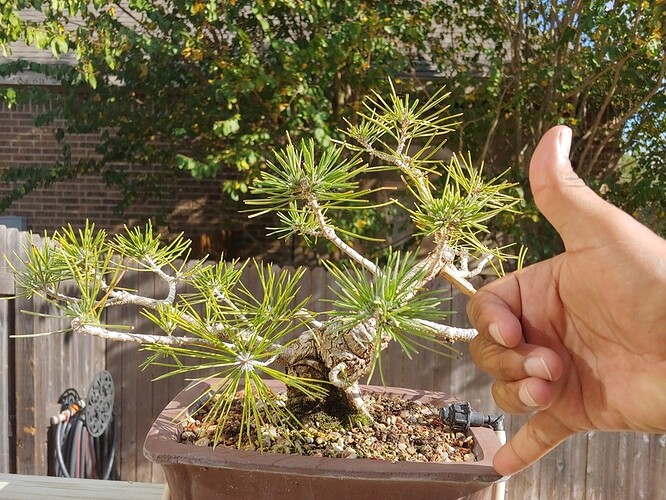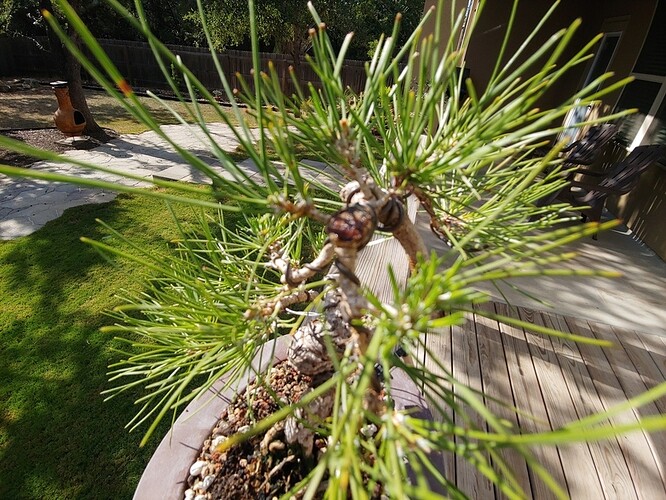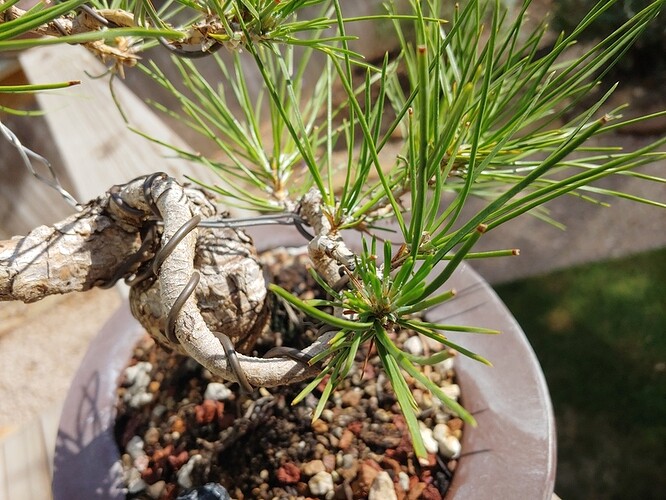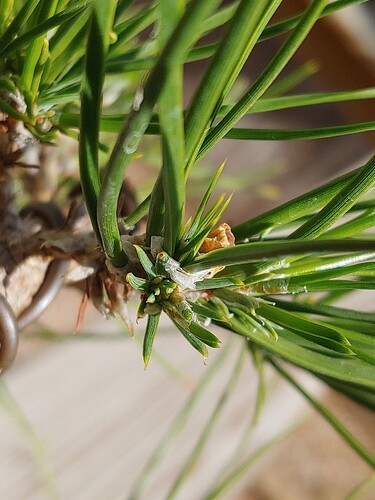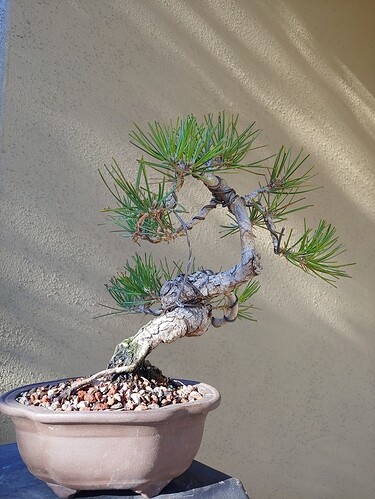@bwaynef You are correct about the need to assess the strength of the  ! My plan was to fertilize the entire year to facilitate resource accumulation and hardening off of the 3rd flush, if the indicators are present to suggest that a second decandling could be performed.
! My plan was to fertilize the entire year to facilitate resource accumulation and hardening off of the 3rd flush, if the indicators are present to suggest that a second decandling could be performed.
We are in agreement, in that this may be more of a shohin refinement technique to be utilized when a specific scenario exists. Furthermore, we see eye to eye, that this would almost certainly not be a technique that be performed annually and definitely without considering the risks vs benefits.
A quick run down of why I reduced needle count and length in this experiment. The vigor of this pine and two others have been difficult to reign in, long needles and long internodes, overly aggressive growth. Despite efforts to control via watering, fertilizer - dose, frequency, nutrient load, timing of summer decandling. I decided to pluck needles (a norm for me) and shorten needles (new practice) as a method to balance the energy. Again, to get shorter needle and shorter internode length… hopefully.
I believe if adequate needle reduction is achieved from this year, needle cutting in the future might not be needed.
Ultimately, the pine I REALLY wanted to try this on, may not be in the position in which this technique (if successful) could be applied next year. It may not flush 3-4" candles with needles elongated and hardening/ed by late February after a mild winter. This year I’ll push decandling it at the end of July/ first week of August, I hesitate to delay much further at this time. This is due to decreasing daylight hours which even though I’m in Texas with long growing season may inhibit a second flush. If this were to happen I’m fairly certain buds would set, but then I’m back to long needle and long internode. Without the second flush extra resources will be in the tank so to speak and the tree would still accumulate resources over the fall/winter. Then I might get to try this 3 flush technique if the results of this trial are promising.
In conclusion, this could be a hepful refinement technique to be utilized if a specific set of circumstances align. That is if the technique can be reliably reproduced with consistent results. A quote from Ryan Niel, " Stack a nuance, on top of a nuance and now you have a new way of doing things."
Thanks for everyone’s interest, cautionary warnings, opposing opinions, support and everything in between.
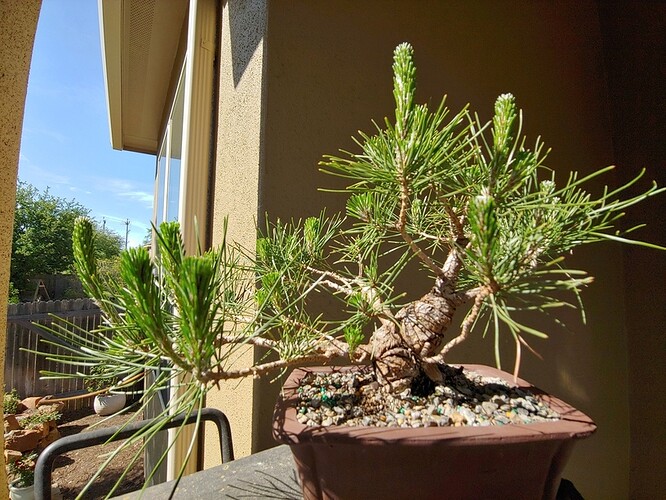





 ! My plan was to fertilize the entire year to facilitate resource accumulation and hardening off of the 3rd flush, if the indicators are present to suggest that a second decandling could be performed.
! My plan was to fertilize the entire year to facilitate resource accumulation and hardening off of the 3rd flush, if the indicators are present to suggest that a second decandling could be performed.